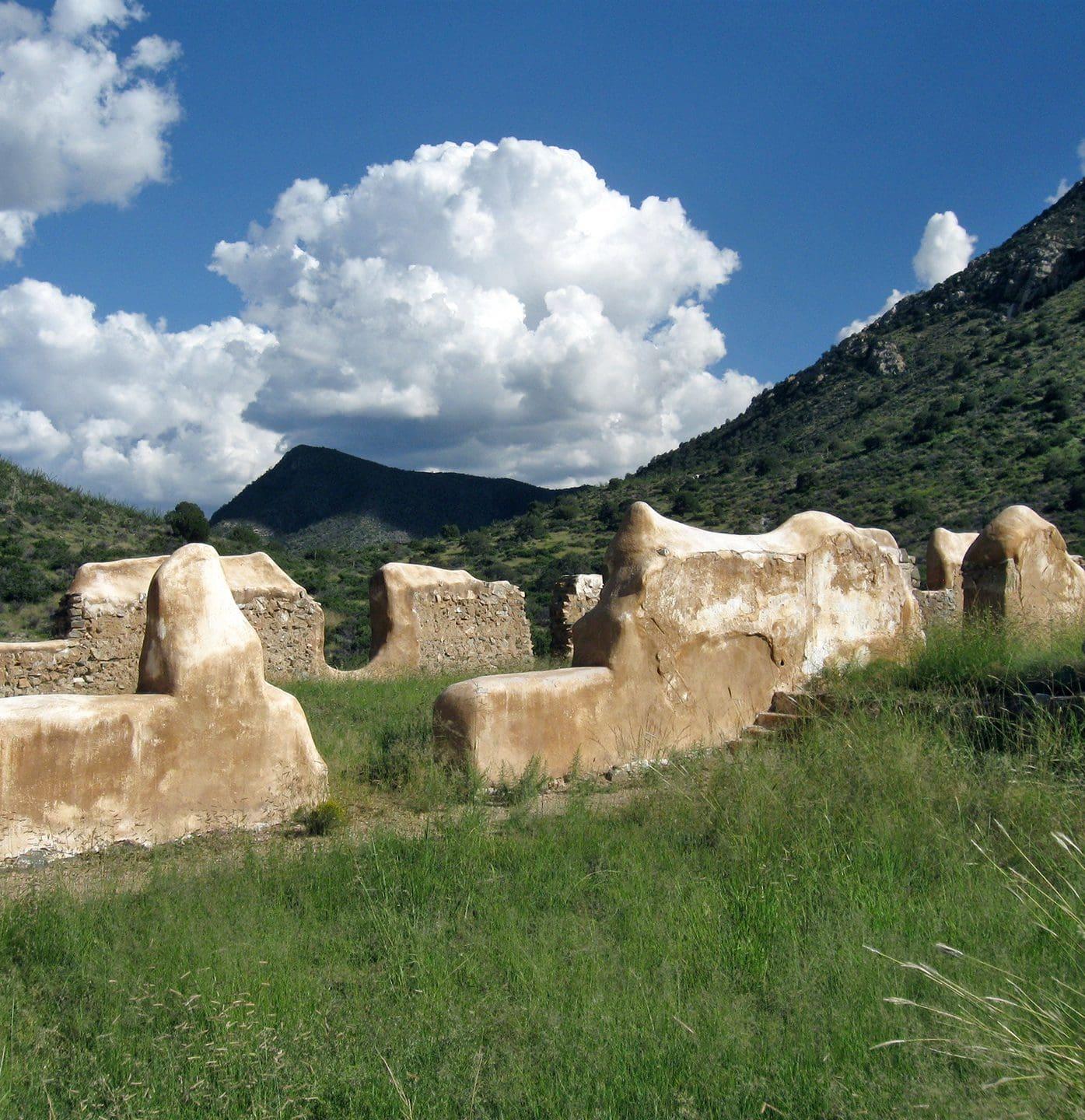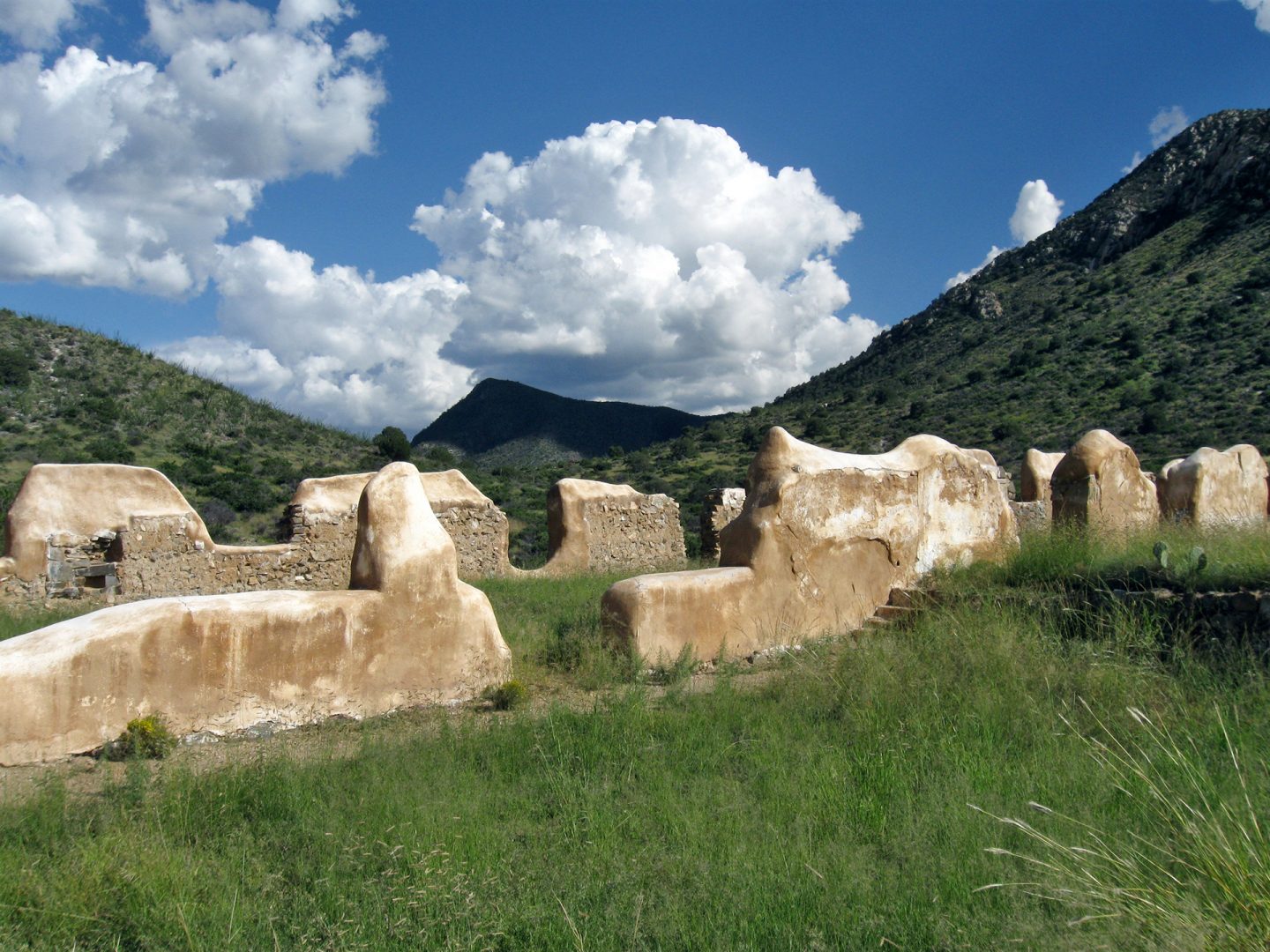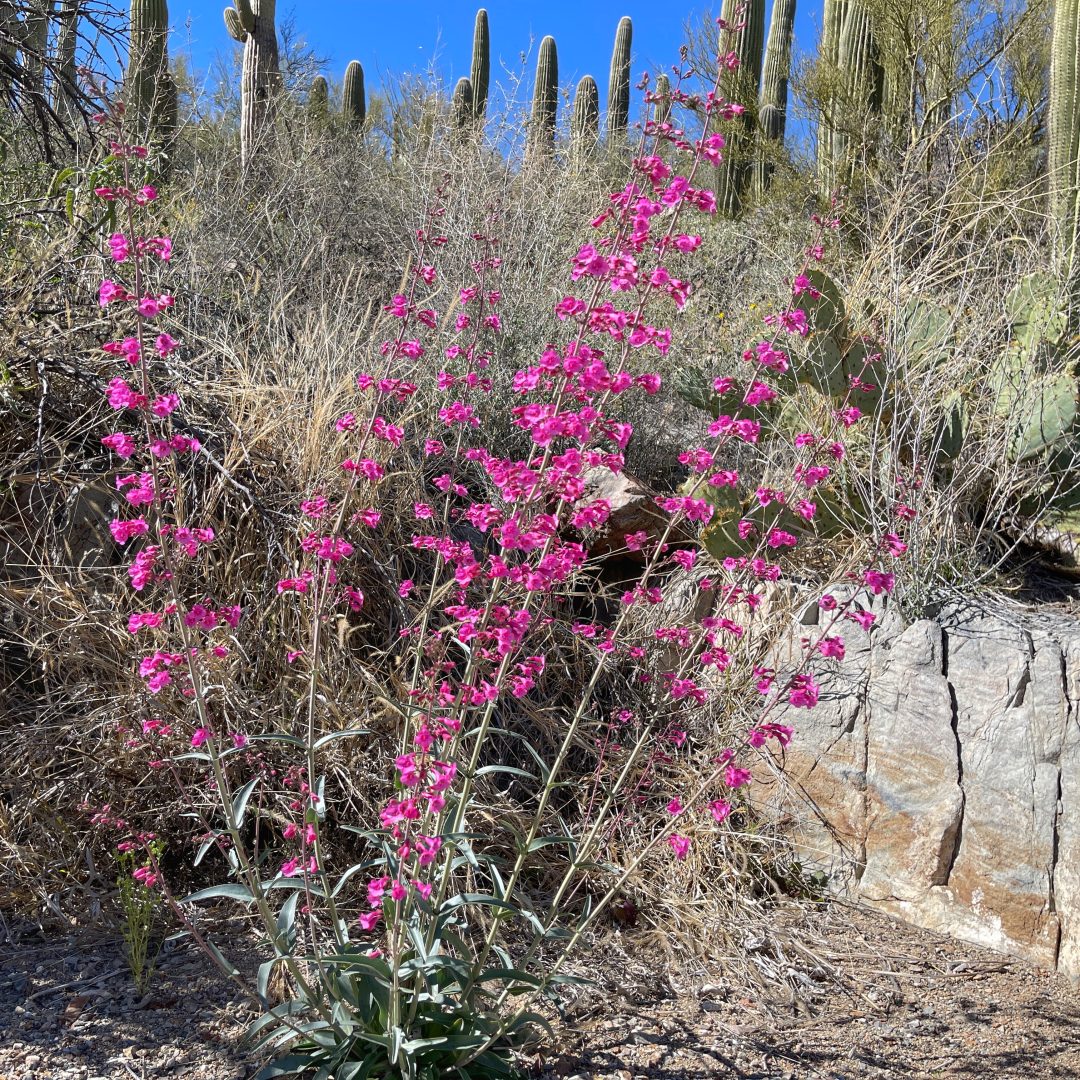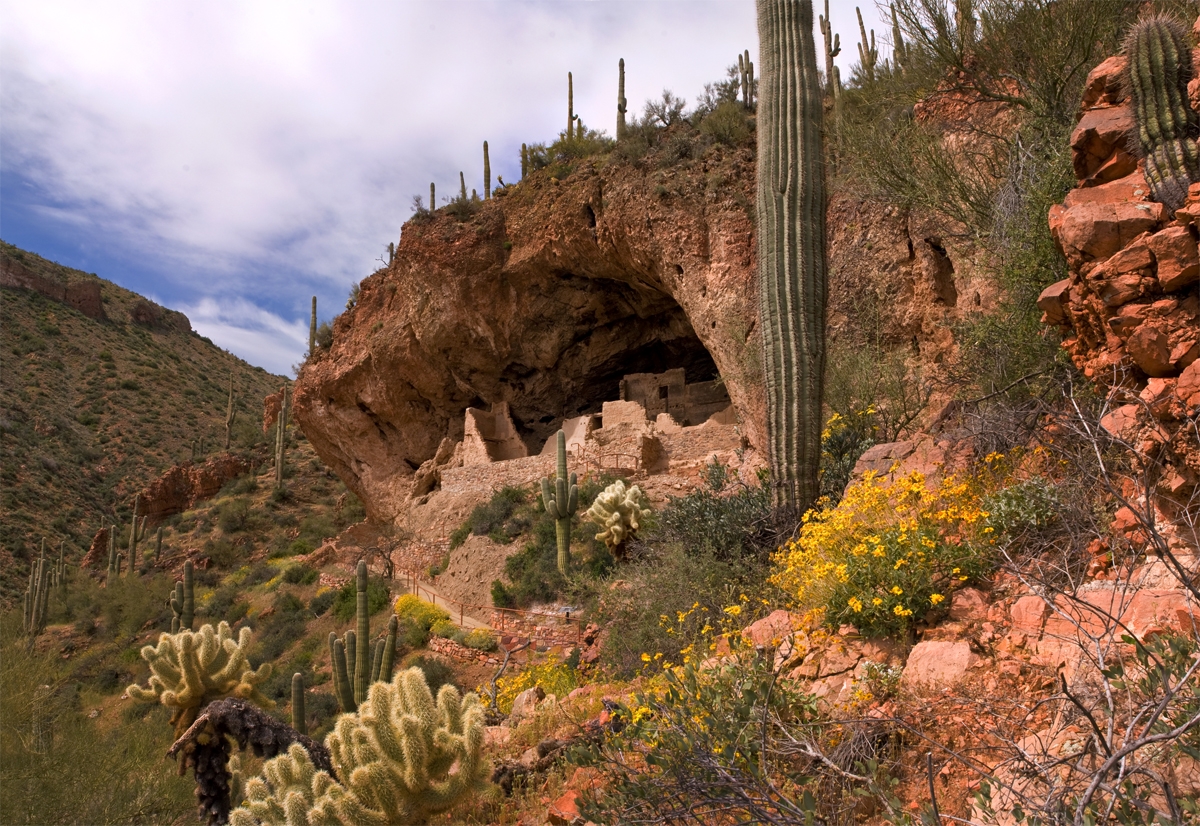
Experience Fort Bowie National Historic Site

A site of great historical significance and serene natural landscapes on the homelands of the Chiricahua Apache.
Explore and experience the significant history and breathtaking natural beauty of Fort Bowie National Historic Site, located on the homelands of the Chiricahua Apache. This site located in southeast Arizona, 25 miles from Chiricahua National Monument, preserves a history that must not be forgotten. Hike into this serene landscape that once saw turbulent battles as Indigenous peoples fought to protect their home in a decades-long war that ended with the forcible removal of the Chiricahua Apache, whose many descendants live today.

Visiting Fort Bowie National Historic Site
Fort Bowie National Historic Site rests in a low point between the Chiricahua Mountains to the south and the Dos Cabezas Mountains to the north. The mountains are surrounded by high desert grasslands, the San Simon Valley to the northeast and the Sulphur Springs Valley to the southwest. From Chiricahua National Monument, it is a relatively short drive to the trailhead that visitors use to hike into the park. There is a vehicle-accessible route as well.
Here, the desert transitions to grasslands and woodlands habitat. Appreciate the lush landscapes with species such as acacia and mesquite mixed with desert sumac, junipers, pines, and grasslands. Prickly pear cactus, agave, beargrass, and ocotillo color the rocky slopes. The canyon bottoms are fed by the perennial flow from Apache and Siphon Springs. With these diverse habitats, the park is home to an impressive number of pollinators, birds, and other wildlife species.
Like most areas in southern Arizona, Fort Bowie experiences heavy summer monsoons, so be sure to check the weather reports during the summer months for high temps and frequent downpours. Winter temperatures can dip below freezing, and the occasional winter snow is a beautiful sight.
On the hike in and while exploring the grounds, learn about the park’s historical and cultural significance while you experience a landscape of remarkable natural diversity, with reliable springs and unique geology that the park helps conserve. The trail winds through the park past the remains of a Butterfield Stage Station, the old post cemetery, a replica of an Apache wickiup, Apache Spring, and finally the first and second forts. The visitor center, museum, and store are a must, as they provide even more learning opportunities. While you might be able to explore the grounds in a two-hour visit, you may find you want to spend more time reflecting on the depth of the history preserved here.

Learn the History of the Apache Wars
Fort Bowie National Historic Site preserves an important history that must not be forgotten.
As you walk among the adobe structures, now more than a century old, and experience the beautiful and diverse natural setting, you’ll learn the significant and heart-wrenching history of a people who, despite all their efforts, were hunted and eventually removed from their homelands as prisoners of war. Standing on these ancestral lands, where many of the events of the Apache Wars took place, is a powerful and emotional experience.

The Site of The Battle of Apache Pass
Take a tour with a ranger, read the waysides, and view the exhibits in the visitor center to learn about the complex and painful events leading up to the surrender of Geronimo and the imprisonment of the remaining Chiricahua Apache, beginning, by some accounts, with the Bascom Affair and the ensuing Battle of Apache Pass. The site of this 1862 battle is visible from the main trail.
While at the park, learn about the strong leadership of Chief Mangas Coloradas, Chief Cochise, and Geronimo; the brief periods of peace and life on the Chiricahua Reservation; and the eventual forcible removal of the Chiricahua from their homelands.

Cochise Stronghold
After the death of Chief Mangas Coloradas, capturing or defeating Cochise became the key to US victory.
Chief Cochise began to operate primarily from the impregnable mountain rock formation known as Cochise Stronghold in the Dragoon Mountains, visible on the horizon from Massai Point in Chiricahua National Monument. The trailhead for Cochise Stronghold is roughly an hour’s drive from Chiricahua National Monument and well worth the trek to better understand the history of Cochise and the Chiricahua Apache.

Want to learn more about this significant history? Browse our online store for books and other park-related products. Your purchases support the park.

Life in Apache Pass
By Kaylene Wright, Park Ranger
Fort Bowie National Historic Site is one of the lesser-visited National Park Service sites, but it is truly a gem of cultural history and beautiful natural resources.
The Chiricahua Apache
“When I was young I walked all over this country, east and west, and saw no other people than the Apaches.”
– Cochise, Chiricahua Apache Leader
The area Fort Bowie is in the homeland of the Chiricahua Apache.
Chiricahua Apache were divided into four bands: Bedonkohe, Chokonen, Chihenne, and Nehdni. The Chokonen were most well-known for being in the area of Apache Pass and the Dragoon Mountains across Sulphur Springs Valley. They were led by Chief Cochise, who remains an important figure in Arizona today, with numerous counties, areas, and landmarks named in his honor.
Geronimo, perhaps one of the most well-known Indigenous leaders, was a member of the Bedonkohe, who were closely related to the Chihenne (sometimes referred to as the Mimbres). Famous leaders of that band included Chief Mangas Coloradas and Chief Victorio.

In the area that would become known as Apache Pass, the Chiricahua Apache hunted large game, gathered plant foods, and practiced a limited amount of agriculture.
During this time, they resided in dome-shaped structures called wickiups, made from a framework of sturdy branches covered with plants such as beargrass and yucca, which are abundant in this area.
In the mid-1880s, after years of fighting to protect their homeland, Chiricahua Apache would carry a belt with everything they needed including a knife, emergency ration bag, and medicine bag. The emergency ration bag was full of food, kept with them at all times to have in case they were forced into a survival situation. The bag contained food such as nuts, prickly pear, and mesquite beans. The medicine bag contained items such as stone, abalone shell, petrified wood, herbs, red clay, ash from coming-of-age ceremony, and cedar. Tobacco and pollen bags were also common, with pollen having incredible importance due to its ability to create life and provide so much.

The Apache Wars
The main events of the Apache Wars occurred in the years 1861-1886. The conflict in the Apache Pass area began when Lieutenant George Bascom wrongly accused Cochise of kidnapping a boy and stealing livestock. Bascom invited Cochise to a meeting in what would later become Fort Bowie, where Cochise and his brothers denied the charges. Cochise managed to escape while family members were held hostage. The Apache Wars ensued, lasting until Geronimo’s surrender in 1886.
“Once I moved about like the wind. Now I surrender to you and that is all,” Geronimo said.

After the surrender, the Chiricahua Apache were forcibly removed from their home, separated from their families, and sent on trains to Florida. Later, most would be sent to Alabama and then Fort Sill, Oklahoma. Many perished from illness and many children were sent to boarding schools. In 1913, no longer prisoners-of-war, the Apache were allowed to remain at Fort Sill or move to areas like the Mescalero Apache Reservation. Geronimo’s death in 1909 meant that he was never able to return to his home.
Today, at Fort Bowie National Historic Site, we continually strive to learn more about and share Chiricahua Apache stories and experiences. Artifacts, photographs, and a selection of literature are available at the visitor center.

Fort Bowie
Shortly after the Bascom Affair and the significant Battle of Apache Pass in 1862, officers made the decision to build a fort in order to take control of the Apache Spring and defend Apache Pass. Construction began on the “First” Fort Bowie almost immediately. This fort had a few stone wall defenses, averaging 4.5 feet in height. Living at the first fort wouldn’t have been pleasant; soldiers at this time were living in tents that were wearing away due to the weather, and once their quarters had been created, they were little more than partial dugouts on a hillside. The walls were stone and adobe with roofs made of dirt and branches. Officers complained that these collection of “mud huts” were damp, stuffy, and full of leaks.
In 1864, a “Second” Fort Bowie was constructed, which is the main fort that we are able to view today. Located on the large saddle between Bowie Peak and Overlook Ridge, the second fort was about three hundred yards southeast of the first fort. The second fort dramatically improved quality of living, with proper buildings neatly organized around a large parade ground. The initial construction took over 32 thousand adobe bricks and seven thousand feet of lumber, with even more being required as the fort expanded and remodeled buildings over the years. Ultimately, Fort Bowie had more than 60 buildings.

Fort Bowie’s most striking building onsite was the commanding officer’s quarters, a large and elegant Victorian-style house costing $4,000 to construct, which created frustration among some of the soldiers, who felt the money could have been put to better use.
“The large amount of useless and unnecessary ornamentation has been a source of great expense and waste of time and such a plan should never have been authorized,” Major Eugene B. Beaumont wrote to his superiors. Other superior officers had nice homes as well, but they couldn’t relax completely – they could be forced to move if a higher-ranking officer arrived.

Life for Fort Bowie Soldiers
What were the job duties of a Fort Bowie soldier? The primary job was to defend people and caravans traveling through Apache Pass. They were told to attack any Apache people that they encountered nearby. During lesser-active times, a soldier would be expected to complete drills and inspections, practice at the post rifle range, and assist with construction and renovation projects.
Who were the people stationed at Fort Bowie? How many people lived there? At the height of its operation, around 1885, one could expect up to 300 troops at the post. During the years before and after, however, the average troop presence was 135. The soldiers came from all over – over half were not born in the United States, which was common in the frontier army. Of the 16 states represented, New York and Pennsylvania had the highest number of men. Most of the troops were young men in their twenties.
What was there to do during spare time? In the early years of the fort, Captain John Bourke reported that the isolation and “humdrum of life was enough to drive one crazy.” Once soldiers were off work, they found ways to occupy their time such as cultivating a garden, improving their quarters, finding a good book at the library, and writing letters to loved ones. For those who enjoyed games, they could enjoy a day at the tennis court or in the billiard room and officer’s club room. Some of them picked up an interest in wildlife and would collect and stuff animals as a hobby.

Many would spend their money at the post traders store where they could purchase food and beverages, including the most popular refreshment, beer! The fort ice machine made the drinks extra refreshing. The store also sold clothing, tobacco, and knickknacks. In the 1870s, salary per-month was $13 for privates, $15 for corporals, and $17 for sergeants.
During its time in operation, Fort Bowie would also occasionally host special events. These events included balls, concert recitals, sporting events, and even a wedding. A baseball game was held on Thanksgiving of 1873, with the Fort Bowie team “Sumner B.B.C.” played “Neversink B.B.C,” a group from nearby Fort Grant. Priests would provide opportunities for men to attend church services, including some titled, “As Moses Lifted Up the Serpent” and “Christ Stilling the Tempest.” During the fort’s most elaborate event, the 1885 wedding of commanding officer’s daughter Natalie Beaumont to Lieutenant Colonel George A. Forsythe, the parlors were “elegantly decorated with evergreens and choice flowers appropriate to the glad occasion.” The newspaper Arizona Daily Citizen reported that some of the wedding gifts included a pair of gold-silver spoons, silver oyster forks, royal Worcestershire pitcher, Spanish lace, a check for $5,000 and a gold watch to the bride from the groom.
In the 1890s, it was eventually decided that there was no more purpose for the fort being staffed. No longer did mail routes, freight caravans, or emigrants regularly pass through the area. The fort was abandoned in 1894.
Today, the National Park Services preserves remnants of buildings, landscapes, the Apache Spring, and the incredible biodiversity of plants and wildlife of Fort Bowie National Historic Site. It is designed as a hike-in park, so visitors are able to “hike through history” on a 1.5 mile trail to the visitor center and fort structures. The trail includes interpretive signs, stagecoach station remnants, the fort cemetery, and the Apache Spring which still flows today. If unable to walk the 3 mile roundtrip trail, there is an accessible option as well. Call the visitor center at 520-549-6751 for information and access.
Come visit Fort Bowie to discover the natural wonders and significant history preserved there.
Kaylene Wright is a National Park Service Park Ranger at Fort Bowie National Historic Site.

Want to help preserve these significant lands for generations? Your donation supports kids’ programs, research, Indigenous artists’ demonstrations, and more!






